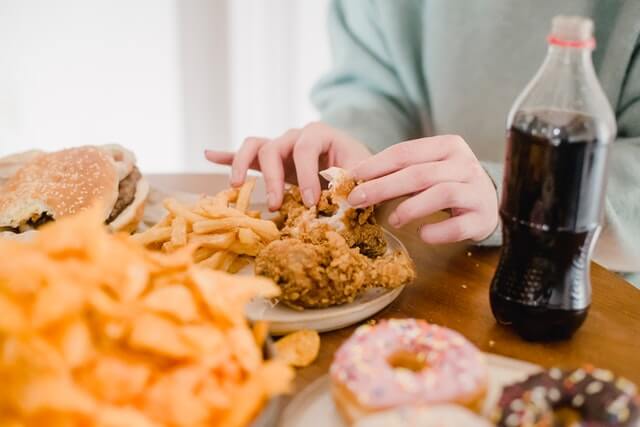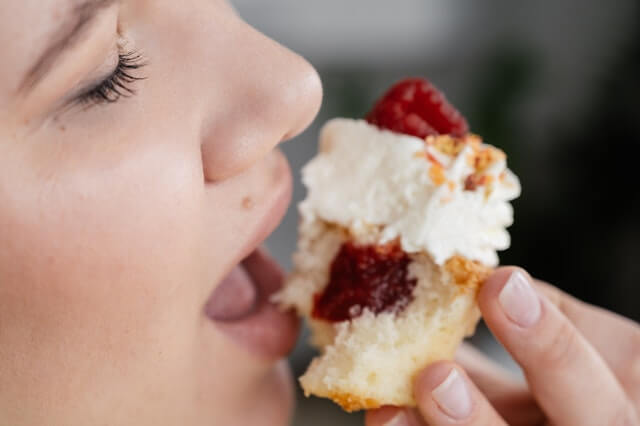If you are one of the 39 million Americans living with chronic migraines, you’re probably pretty familiar with the concept of migraine triggers. A trigger, sometimes called a precipitating factor, is anything that contributes to the development of a migraine attack. Things like high stress, lack of sleep, bright lights, loud sounds, intense smells, changes in weather, and certain foods and drinks, are known migraine triggers.
Since no two migraineurs experience the same triggers, keeping track of yours is a great way to identify the elements in your lifestyle and environment that could be causing your migraine attacks. Plus, it can help you recognize some of the earliest symptoms of a migraine (known as the prodrome stage), so you can be better prepared when the actual attack strikes.
There is a laundry list of foods and drinks that seem to increase the risk for migraines in susceptible individuals. The most commonly reported triggering foods are alcohol and chocolate, but foods that are high in sugar and refined carbohydrates, as well as fatty and processed meals, are also high up on the list.
Interestingly, a large number of migraineurs also report intense cravings for sugary, salty, fatty, or processed foods in the days or hours leading up to a migraine attack. So this contradiction has left many experts wondering whether there could be a sort of “chicken and egg” dilemma when it comes to migraine and carb-y, comforting foods: if you eat a bag of chips and a couple of hours later you get a migraine, was the attack triggered by the chips, or was the craving for chips a warning sign that a migraine was on the way?

A 2021 study published in the Journal of Brain Research says that it may be the latter, and that the explanation for this phenomenon could lie in a small but important area at the center of the brain called the hypothalamus.
The Hypothalamus Connection
The hypothalamus is the main area of the brain controlling appetite. It does so by producing two proteins called neuropeptide Y (NPY) and agouti-related peptide (AGRP), which, when activated, create a sensation of hunger (and sometimes cravings) in the body.
NPY is also associated with migraine headaches. In animal studies, higher levels of NPY were shown to enhance the firing of trigeminovascular neurons, and we know that migraine pain occurs when there’s an increased activity of these neurons in the brain. These specific events almost exclusively occur during the prodrome phase of a migraine, or the “pre headache” stage, when the person may not even know that an attack is about to start. This is why a lot of people misattribute their prodromal symptoms to something that triggered their migraine, instead of something that warned them of the attack.
Other common prodromal warning signs include:
- Irritability
- Trouble sleeping
- Anxiety and hyperactivity
- Mood swings
- Yawning
- Nausea
- Increased need to urinate
- Neck pain or stiffness
In Closing
We tend to put great emphasis on diet and nutrition as preventative measures for migraines, but evidence shows that this may not be the case for all migraine sufferers. To date, the vast majority of migraine triggering food lists have been created by patient self-report, and most of these claims have not been scientifically studied in migraineurs. Eating a specific food and getting a migraine shortly after is not necessarily indicative of the food being a migraine trigger, as new evidence suggests that sudden food cravings could actually presage an impending attack, not cause it.

According to the authors of the study, “the take-home message is that certain lifestyle modifications, such as specific dietary restrictions, are not evidence-based recommendations to treat or prevent migraine due to lack of randomized clinical trials.” They further added that “the fact that specific neuronal populations govern appetite and play a role in migraine pathophysiology is relevant because unlocking this overlap of neural networks will help determine locations (and its pharmacology) with which to target for migraine therapy.”
In the meantime, if you are intensely craving a slice of chocolate cake, a migraine may already be underway – so why not eat it anyway? And perhaps, while you are at it, consider reaching for your bottle of MigreLief-NOW, our fast-acting nutritional-support supplement that has your back when you need it most!


